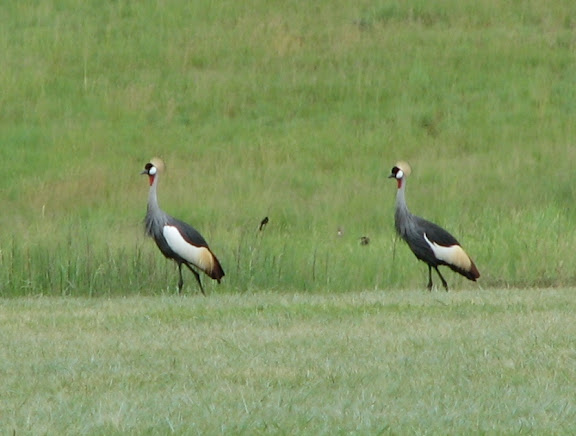We have hundreds of pictures taken during the visit to Lesoto and the Drakensberg. It becomes difficult to decide which stories to tell; the beauty, the poverty, the history, the people, or some abbreviated combination. This, of course, is a typical dilemma of the journalism profession. I’m choosing to wrap up this adventure segment with some of my favorite pictures, perhaps with some text to describe them.
This is not a typical dwelling in South Africa. It is called a “shack” and is constructed from any available materials. It is often the only available housing when people move from rural areas to the cities for employment. The SA government is trying to eliminate these by replacing them with concrete block structures, usually asking for some equity participation. In the meantime, they provide shelter.
You’ve seen the pictures of the treacherous roads in Lesoto. Our driver, Sim, is in the process of eating his lunch of greasy fried chicken while managing the steering wheel of a minibus loaded with tourists.
Is your life insurance paid up? Is your beneficiary in the bus with you?
The Spioenkop battle occurred on January 24th, 1900. It was only one battle in the Anglo-Boer War. The British decided to capture the high ground under cover of night, January 23rd, with 1700 men – and succeeded. Still under cover of darkness they dug a shallow trench in the stony ground and built a low stone rampart on what they considered the best position.
The Boer General Botha gave orders to occupy the surrounding slightly lower hills and placed seven field guns in strategic positions.
The resulting massacre saw the British buried in mass graves. Families who could afford the cost put up markers to their fallen loved ones. There are a number of stones engraved with a phrase such as “Here lies a brave British soldier’ known unto God’”.
From the ugliness of war we turn to the ugliness of practicality. Most of us have had the unpleasant task of disposing of the body (carcass) of a farm animal or a pet. This picture shows the solution adopted by the local government in this section of South Africa.
This dumping site is then frequented by vultures, ravens, crows, and other carrion feeders. They clean up the mess. I have to wonder why the powers chose this spot, right next to a reservoir. Actually, there is some rationale here as there is a species of endangered vultures that frequent this site and thrive on the carcasses.
Time for a little beauty, although of a fairly harsh kind. This black & white photo shows an Acacia tree branch. The Acacia is one of the favorite foods of the giraffe. They wrap their tongues around the branch and chow down without damaging themselves. It’s a wondrous thing.
More beauty. We enjoyed some fantastic sunsets because of the clouds forming over the Drakensbergs. I have the color version of this photo but like the B&W one better.
What kind of an African adventure would it be without some critters. These Crested Cranes visited the backpacker lodge one day and posed nicely for me. I had no idea what they were until I did the zoom thing on my camera – then I was really excited.
And, finally, a reminder that we can kill with kindness. Baboons being fed by humans quickly learn to view us as an easy source of food. They have some nasty teeth, are very strong, and become aggressive. They must then be destroyed, all because we thought we were being nice.
We are finally finished with the Drakensberg segment of our last visit. A couple more journals from last February should clean up the backlog and let us move into the July/August trip.
Floyd
Monday, February 25, 2008
Drakensberg IV
Subscribe to:
Post Comments (Atom)
No comments:
Post a Comment